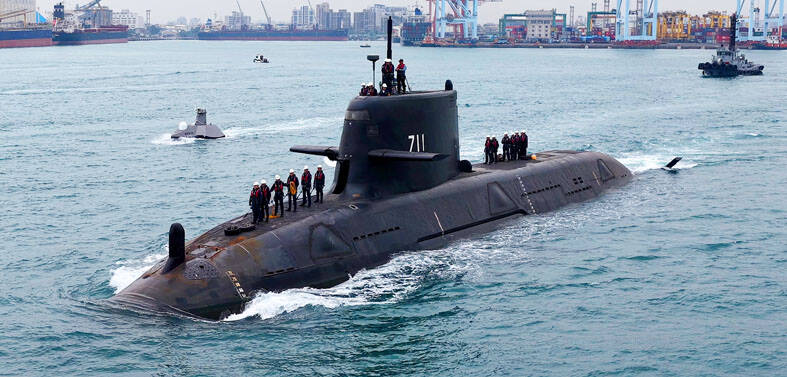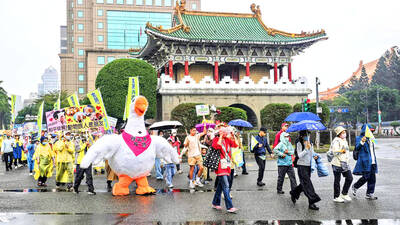Greater efforts must be made to appeal to more Western, Japanese and Taiwanese tourists to revive the nation’s waning tourism business, the travel industry said after the number of Chinese tourists visiting Taiwan was found to be much lower than expected.
Statistics from the Sun Moon Lake National Scenic Area Administration Tourism Bureau showed that this summer Sun Moon Lake (日月潭) — one of the most popular tourist destinations in Taiwan — received only 290,000 visitors, or 60,000 less than last summer.
Meanwhile, statistics from the Forestry Bureau showed that 111,300 people had visited Alishan (阿里山) in June and July, 400 more than the number for the same period last year.
While the number of visitors to Alishan held steady, there were no signs of improvement anytime soon, the travel industry said.
Shop owners and hoteliers at both locations said that allowing a greater number of Chinese tourists to come to Taiwan had not resulted in the stellar business opportunities and revenues the government had promised, adding that only one or two travel agencies were willing to collaborate with local hotels on the condition that management agree to slash prices well below par.
For example, Sun Moon Lake’s Eihan Resort began work last year to expand its number of rooms from 66 to 101.
The hotel saw a 60 percent increase in its occupancy rate after the renovations.
The hotel manager, however, said the hotel had had to cut its room rate from NT$4,000 to NT$2,500 to be allowed to deal with travel agencies.
Because of the drop in tourists, the occupancy rate at Hotel Del Lago in June and July fell from 53 percent to 51 percent compared with the same period last year.
The Lalu, the lake’s best-known high-end luxury hotel, reported an occupancy rate between 80 percent and 90 percent, but less than 10 percent were Chinese tourists.
Chen Cheng-hsing (陳正興), the manager of Alisan House, said that most Chinese tourists only had meals at the hotel and did not stay overnight.
His competitor, Liao Ching-tai (廖景泰) of Wenshan Hotel, agreed, saying that most of his overnight guests were local tourists or visitors from Japan and Southeast Asia.
Also See: County official says Beijing to blame for low tourist numbers

NUMBERS IMBALANCE: More than 4 million Taiwanese have visited China this year, while only about half a million Chinese have visited here Beijing has yet to respond to Taiwan’s requests for negotiation over matters related to the recovery of cross-strait tourism, the Tourism Administration said yesterday. Taiwan’s tourism authority issued the statement after Chinese-language daily the China Times reported yesterday that the government’s policy of banning group tours to China does not stop Taiwanese from visiting the country. As of October, more than 4.2 million had traveled to China this year, exceeding last year. Beijing estimated the number of Taiwanese tourists in China could reach 4.5 million this year. By contrast, only 500,000 Chinese tourists are expected in Taiwan, the report said. The report

Temperatures are forecast to drop steadily as a continental cold air mass moves across Taiwan, with some areas also likely to see heavy rainfall, the Central Weather Administration (CWA) said. From today through early tomorrow, a cold air mass would keep temperatures low across central and northern Taiwan, and the eastern half of Taiwan proper, with isolated brief showers forecast along Keelung’s north coast, Taipei and New Taipei City’s mountainous areas and eastern Taiwan, it said. Lows of 11°C to 15°C are forecast in central and northern Taiwan, Yilan County, and the outlying Kinmen and Lienchiang (Matsu) counties, and 14°C to 17°C

STEERING FAILURE: The first boat of its class is experiencing teething issues as it readies for acceptance by the navy, according to a recent story about rudder failure The Hai Kun (海鯤), the nation’s first locally built submarine, allegedly suffered a total failure of stern hydraulic systems during the second round of sea acceptance trials on June 26, and sailors were forced to manually operate the X-rudder to turn the submarine and return to port, news Web site Mirror Daily reported yesterday. The report said that tugboats following the Hai Kun assisted the submarine in avoiding collisions with other ships due to the X-rudder malfunctioning. At the time of the report, the submarine had completed its trials and was scheduled to begin diving and surfacing tests in shallow areas. The X-rudder,

DEMAND: The government should enact regulations in line with Austria and Germany to incorporate vegan nutrition into school meals, an advocate said More than 1,000 people yesterday marched in Taipei to promote veganism, calling for legislation to incorporate vegan diets into school lunches and the national net zero emissions program. Participants gathered on Ketagalan Boulevard in front of the Presidential Office Building for the march, which was organized by the Vegan Action Network (VAN). Former ambassador to Chad Chiu Chung-jen (邱仲仁), actor Yankee Yang (楊子儀) and actress Cindy Lien (連俞涵) attended the event. VAN member Marianne Chao (趙梅君) said that the campaign aimed to urge the government to promote vegan diets across schools and government agencies via legislation and national policies, which would help build